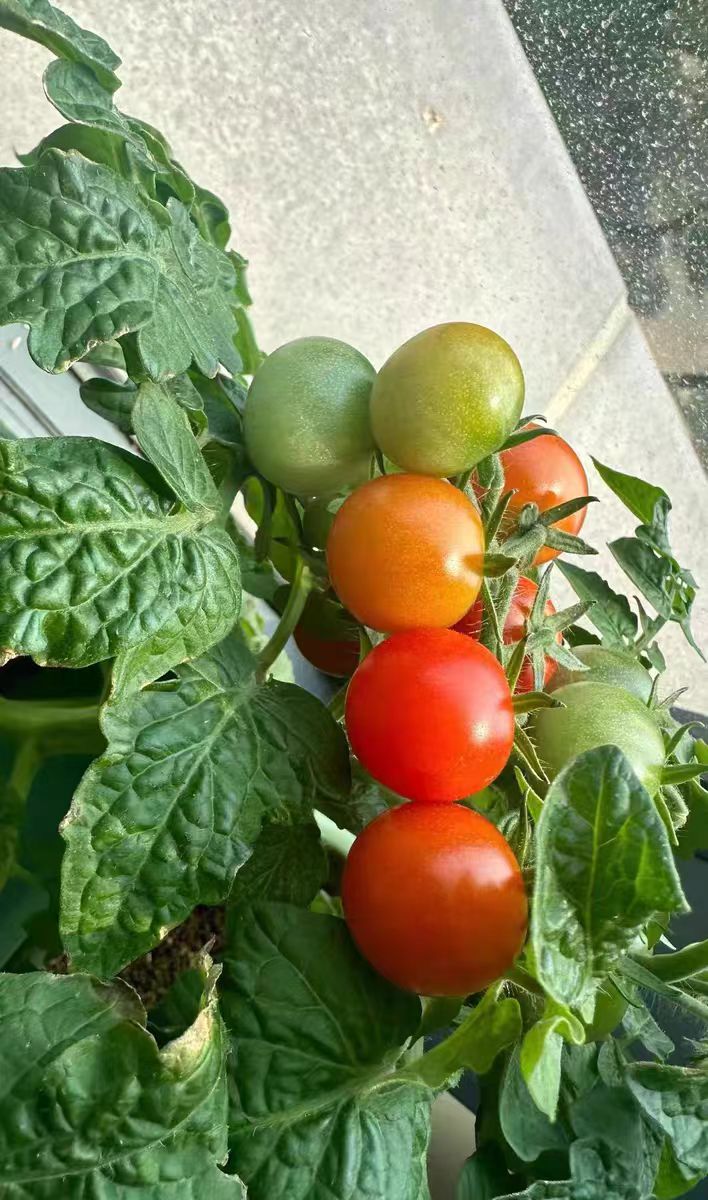Many vegetable farmers and gardening enthusiasts get worried when the leaves of their homegrown tomato seedlings suddenly curl up. In fact, leaf curling in tomato seedlings isn’t caused by a single factor. We need to analyze common causes step by step and then address them targetedly.
Environmental Influences
Tomato seedlings love sunlight, but prolonged exposure to intense sunlight can cause rapid water loss in leaves, making them prone to curling. Especially during the scorching midday sun in summer, if seedlings aren’t shaded, leaf edges will first turn dry and brown, followed by the entire leaf curling up. Temperature also plays a role: tomato seedlings thrive in warm, comfortable environments. Sudden high temperatures or poor ventilation in greenhouses can accelerate water evaporation from leaves. If water supply can’t keep up, leaves will curl. Conversely, sudden temperature drops affect root absorption of water and nutrients, leading to curling due to water and nutrient shortages.
Water Management Issues
Improper watering is a common culprit. If seedlings aren’t watered for a long time and the soil is parched, roots can’t absorb enough water, so leaves curl automatically to reduce evaporation. Overwatering is also problematic: waterlogging in soil suffocates roots, causing rot over time. Even if soil is wet, rotten roots can’t absorb water, leading to leaf curling. Additionally, dry air—especially in arid northern regions or greenhouses with low humidity—speeds up leaf water evaporation, also causing curling.
Soil and Fertilization Problems
Hard, poorly ventilated soil hinders root growth and reduces absorption capacity, leading to leaf curling. Improper fertilization, such as excessive chemical fertilizers or fertilizers applied too close to roots, can burn roots and impair water/nutrient absorption. Nutrient deficiencies also cause curling: for example, potassium deficiency turns old leaf edges yellow and curled, while calcium deficiency makes new leaves curl and shrivel.
Solutions for Curled Leaves
Reasonable Sunshade and Temperature Control:
In summer, shade seedlings with a canopy or move potted plants to semi-shaded areas to avoid midday (intense light).
For greenhouse cultivation, ventilate promptly to keep temperatures within the optimal range (15–28°C).
During cold spells, insulate outdoor plants with small sheds or move potted seedlings indoors.
Scientific Watering:
Water when the soil surface dries, ensuring water penetrates the soil without waterlogging.
If waterlogging occurs, loosen the soil immediately to promote evaporation; repot if severe.
Spray leaves daily to increase air humidity in dry environments, avoiding high-temperature midday.
Soil and Fertilizer Management:
Regularly loosen the soil to improve aeration; repot with loose, fertile soil if severe compaction occurs.
Apply fertilizers in small, frequent doses, avoiding concentrated solutions. If root burning is suspected, flush the soil with water to dilute excess fertilizer.
Supplement targeted nutrients for deficiencies: use plant ash for potassium or calcium solutions for calcium.
Most cases of leaf curling in tomato seedlings stem from issues in environment, water, soil, or pests during cultivation. By monitoring plant growth, promptly analyzing causes, and taking targeted measures, you can help seedlings recover, grow lush green leaves, and eventually bear abundant tomatoes.
Is there a problem with the curled leaves of tomato seedlings?

Share with
Tagged in :



